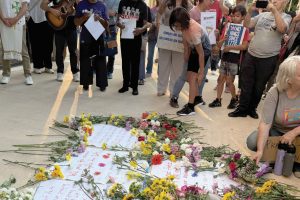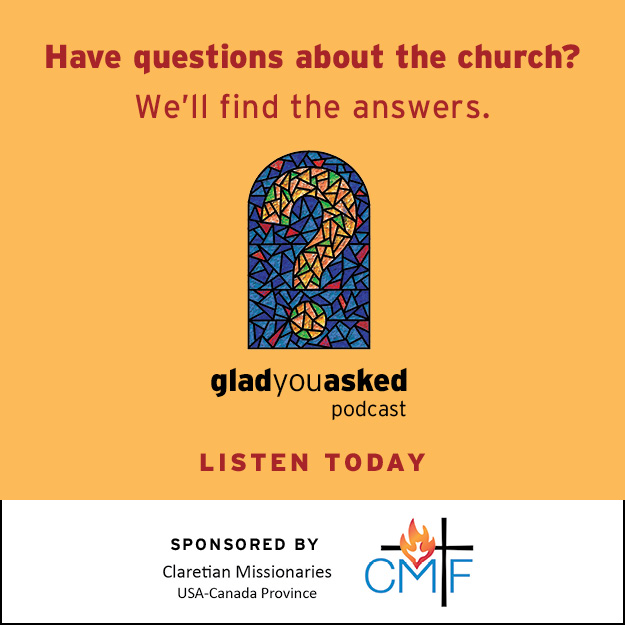THE 1950s
When Fidel Castro claims victory for his revolution on January 1, 1959, he praises the support of the Catholic Church and declares, “Catholics in Cuba have given their most determined collaboration to the cause of freedom.”
Indeed, six years before, it was the Archbishop Enrique Pérez Serantes of Santiago, who saved Castro’s life after he led a failed invasion of the military barracks of Cuartel Moncada on July 26, 1953, considered the start of Castro’s Cuban Revolution. The military massacred many of the young people involved in the attack. Castro and a few companions fled to the mountains.
Fearing for their lives and under pressure from the families, the archbishop himself went into the hills, looking for Castro and the others with assurances of a fair trial. Castro received a sentence of 15 years. But two years later, Fulgencio Batista, who had come to power through a military coup in 1952, under political pressure (and pressure from the Jesuits who had educated Castro) granted amnesty to all political prisoners, including Fidel Castro, who left for Mexico to continue his revolt against Batista. Castro is said to have met Ernesto “Che” Guevara while in Mexico.
As rebel forces show more control over the country, Batista and and his closest collaborators leave Cuba on January 1, 1959.
Fidel Castro enters Santiago de Cuba victoriously, promising honest democracy, freedom for all, immediate elections, and restitution of the Constitution. He also praises the support of Catholics.
THE 1960s
Initially the church continues to support the revolution and its agrarian reforms. Castro shows no intention of sharing power with political groups that had supported him and initiates contacts with Russian political leaders, who begin visiting Cuba.
In August 1960 the Cuban bishops issue a collective letter that firmly condemns communism. Castro views the letter as a declaration of war.
Yet it is not until after the failed Bay of Pigs invasion on April 17, 1961 that a tragic decade of persecution and death begins in Cuba.
The church in Cuba loses its schools, publications, access to media, and even its members.
Meanwhile, the rest of the church is focused on the Second Vatican Council, inaugurated in 1962. The church in Cuba is completely alone and enters a period of silence. It turns inward, trying to preserve the little space it still has.
Through its new chargé d’affairs in Cuba, Msgr. Cesare Sacchi, the Vatican begins to implement a new diplomacy of coexistence. Sacchi is generally regarded as the architect of “pacification” between church and state during the 1960s and 1970s.
THE 1970s
In 1969, after the Latin American church meeting in Medellín, Colombia, known as the birthplace of liberation theology, the Cuban bishops issue a letter calling for conversion on social and individual levels and inviting Cubans to listen to the signs of the times. The letter also denounces de “unjust act of [U.S.] embargo” against Cuba, saying it contributes to unnecessary suffering.
Caught between the alternatives of preservation and participation in the new society, the Cuban bishops opt for the latter in an attempt to become a vital presence in Cuban society. The church realizes that it must be able to live its identity and fulfill its mission in any circumstance. It adopts an attitude of presence among the people, sharing its suffering and offering the witness of love.
THE 1980s
In the 1980s the Cuban church begins to look to the future. Following the Latin American bishops conference in Puebla, México, the church in Cuba–the only one under a Marxist government–decides to hold its own “Puebla.” A three-year process of reflection and debate begins in all parishes. In 1986 it culminates in a national synod when representatives from all the dioceses meet in Havana and issue a document outlining a new path for the church in communist Cuba, listing three priorities: incarnation, prayer, and mission. Since then, the message of the church has extended beyond the walls of churches.
At the time no one in Cuba imagines that three years later the communist bloc and the Soviet Union would begin to collapse. The loss of Soviet subsidies pushed Cuba into a “special period” of shortages and austerity measures, which caused great suffering in the population
THE 1990s
As the suffering turned critical, the Cuban bishops speak out loud and clear, condemning the “exasperating policies” of the government and asking for changes. Their pastoral letter of 1993 begins a new era of increasing credibility for the Catholic Church in Cuba that continues to grow.
The visit of Pope John Paul II in 1998 ushers in a new era of relations between the church and the state in Cuba
A NEW CENTURY
In spite of better relations with the state, in 2003 the Cuban bishops mark the 10th anniversary of their 1993 letter Loves hopes for everything (El amor todo lo espera) with a theological instruction that again denounces the government for turning back to methods similar to those used during the first years of the revolution.
The bishops deplore the incarceration of political prisoners and beg for clemency. They ask that the church be granted space to evangelize and denounce that religious freedom is still being limited. Other requests include the possibility to build new churches, permission for priests and religious to enter Cuba, normal access to the mass media, and presence of the church in education.
Fidel Castro becomes ill, and in 2008, when he hands power to his brother Raúl, the bishops issue a statement in which they express their trust “in the new government, praying that it may receive light from on high to begin meeting the hopes and anxieties expressed by all Cubans.”
Since then, the government has begun a series of economic and structural reforms and has announced austerity measures that are also having a negative impact in the population.
In 2010 the Catholic bishops intervene in favor of the so-called “Damas de Blanco” (Ladies in White) movement, who are being harassed in their peaceful marches asking for freedom for family members who are political prisoners. This intervention leads to a series of meetings between the bishops and Raúl Castro and the subsequent liberation of political prisoners.
On December 24, 2011, as the country begins preparations for a Marian Jubilee Year, the Cuban government announces the liberation of 2,900 prisoners for humanitarian reasons. President Raúl Castro says the move is a goodwill gesture after receiving numerous requests by relatives and religious institutions.
During his March 2012 visit to Cuba Pope Benedict XVI acknowledges “with joy that in Cuba, steps have been taken to enable the church to carry out its essential mission of expressing her faith openly and publicly.” But the pope also states that “it is necessary to continue advancing in this respect,” affirming the new era in church–state relations in Cuba.
This article is a web-only feature that accompanies Cuban comeback which appeared in the June 2012 issue of U.S. Catholic (Vol. 77, No. 6, pages 31-35).















Add comment